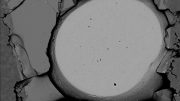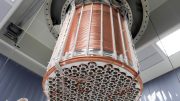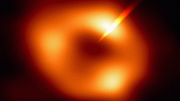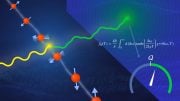
Researchers from the University of East Anglia have introduced a pioneering method using quantum light to detect quantum sound. Their study sheds light on the intricate quantum interactions between molecular vibrations and photons. The findings are expected to enhance understanding of light-matter interactions on a molecular scale and could lead to new avenues in quantum technology and biology. The team’s efforts might also spur the development of innovative techniques to detect individual phonons directly.
Scientists from the University of East Anglia have proposed a new way of using quantum light to ‘see’ quantum sound.
A recent study recently published in the journal Physical Review Letters reveals the quantum-mechanical interplay between vibrations and particles of light, known as photons, in molecules. It is hoped that the discovery may help scientists better understand the interactions between light and matter on molecular scales.
And it potentially paves the way for addressing fundamental questions about the importance of quantum effects in applications ranging from new quantum technologies to biological systems.
The Controversy in Chemical Physics
Dr Magnus Borgh from UEA’s School of Physics said: “There is a long-standing controversy in chemical physics about the nature of processes where energy from particles of light is transferred within molecules.
“Are they fundamentally quantum-mechanical or classical? Molecules are complex and messy systems, constantly vibrating. How do these vibrations affect any quantum-mechanical processes in the molecule?
“These processes are typically investigated using techniques that rely on polarisation – the same property of light used in sunglasses to reduce reflections. But this is a classical phenomenon.
“Techniques from quantum optics, the field of physics that studies the quantum nature of light and its interactions with matter on the atomic scale, can offer a way to investigate genuine quantum effects directly in molecular systems.”
Significance of Photon Correlations in Quantum Behavior
Quantum behavior can be revealed by studying correlations in the emitted light from a molecule placed in a laser field. Correlations answer the question of how likely it is that two photons are emitted very close together and can be measured using standard techniques.
Ben Humphries, a Ph.D. student in theoretical chemistry, at UEA, said: “Our research shows that when a molecule exchanges phonons – quantum-mechanical particles of sound – with its environment, this produces a recognizable signal in the photon correlations.”
While photons are routinely created and measured in laboratories all over the world, individual quanta of vibrations, which are the corresponding particles of sound, phonons, cannot in general be similarly measured.
Potential Applications and Future Prospects
The new findings provide a toolbox for investigating the world of quantum sound in molecules.
Lead researcher Dr Garth Jones, from UEA’s School of Chemistry, said: “We have also computed correlations between photons and phonons.”
“It would be very exciting if our paper could inspire the development of new experimental techniques to detect individual phonons directly,” he added.
Reference: “Phonon Signatures in Photon Correlations” by Ben S. Humphries, Dale Green, Magnus O. Borgh and Garth A. Jones, 2 October 2023, Physical Review Letters.
DOI: 10.1103/PhysRevLett.131.143601









The quantum and classical(
for now polarization) corelation of photon during transmission path in a transparent crystal medium with bending effect has been established in principĺe,to be
in association with general relativity .So,this can be applied for phonon.Thanks to the authors’ inspiration for experimental demonstration,though this phenomena is not new.